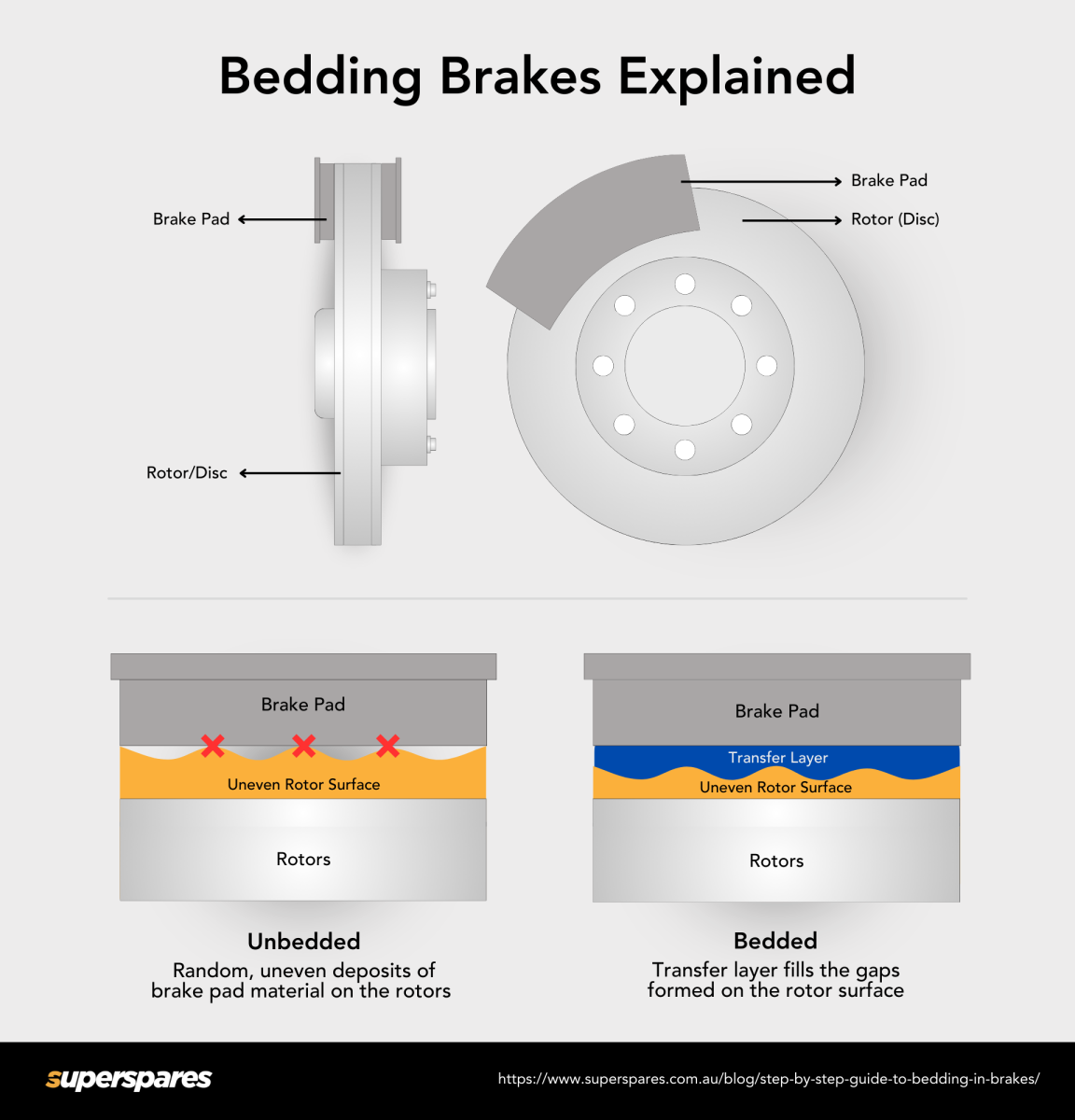How to Bed in Brakes: A Step-by-Step Guide
Author: Toby Date Posted:23 August 2024

Ever heard of "bedding in" your brakes? It's not about getting them tucked in for the night, but rather a crucial procedure for new brake pads and rotors.
What is Bedding in Brakes and Why Is It Important?

Imagine your brakes as a team. New brake pads and brake rotors haven't worked together before, and their surfaces are a bit rough. Bedding in helps them get acquainted. By following a specific procedure of applying and releasing pressure, you create a thin transfer layer of pad material on the rotor. This layer smooths out the uneven rotor surface, improving braking performance by enhancing the pad-to-rotor contact. The result? A smoother, more efficient braking experience with reduced noise and vibration.
Bedding-In Brakes Step-by-Step Process
1. Look for a Safe Area
Before you start, ensure you're in a safe, open stretch area where you can perform several stops without causing traffic issues.
2. Initial Break-In at 60 km/h
Start with 4-6 moderate stops from about 60 km/h down to 20 km/h. Apply the brakes with moderate pressure. This step is designed to bring the brakes up to temperature without overheating.
3. Cooling Phase
Drive for about 5-10 minutes at a moderate speed without braking to allow the brakes to cool down. This helps the initial layer of pad material to bond with the rotor.
4. Final Bedding at 80 km/h
Perform 3-4 aggressive stops from 80 km/h down to 20 km/h. Apply firm, steady pressure but avoid activating the ABS or coming to a complete stop.
5. Cool Down Again
Once you've completed the aggressive stops, drive at a moderate speed for another 5-10 minutes without using the brakes excessively. This cooling period ensures the pads and rotors don't overheat and warp.
Tips and Tricks
Avoid Complete Stops – During the bedding process, avoid coming to a complete stop with hot brakes. This can imprint pad material unevenly on the rotor, leading to vibration and noise.
Consistent Pressure – Apply consistent pressure during braking. Sudden, jerky movements can create uneven layers and reduce braking efficiency.
Don't Rush – Allow time for the brakes to cool properly between cycles. Rushing this process can cause glazing and reduce the effectiveness of your brakes.
Common Mistakes to Avoid
Skipping the Cooling Phase – Failing to let your brakes cool down between cycles can cause overheating and damage to the pads and rotors.
Braking Too Hard, Too Soon – Gradual increase in braking intensity is key. Starting too aggressively can cause premature wear and tear.
What Happens If You Don't Bed-in Brakes?
If you don't bed-in your brakes, several issues can arise. First, the pad material may bond unevenly to the rotors without the controlled heating and cooling of bedding-in. This unevenness can make your braking surface feel like a bumpy road, translating into a pulsing sensation in the brake pedal as you apply pressure, which makes it difficult to modulate braking smoothly.
Additionally, an uneven surface means inconsistent friction, reducing overall braking performance and making it especially dangerous in emergency situations. Lastly, rough contact between the pads and rotors can lead to unpleasant squealing or grinding noises, along with vibrations in the steering wheel or chassis.
Achieve Peak Braking Performance with Superspares
Knowing how to bed in brakes is an essential skill for any car owner. By following these steps, you can ensure your braking system is performing at its best. For all your braking needs — from pads to rotors — check out Superspares, your trusted car parts store. We offer a wide range of high-quality auto parts and accessories to keep your vehicle in top shape.
With these steps, you'll be bedding in your brakes like a pro in no time. Remember, proper brake maintenance not only enhances performance but also ensures your safety on the road. Happy wrenching!


